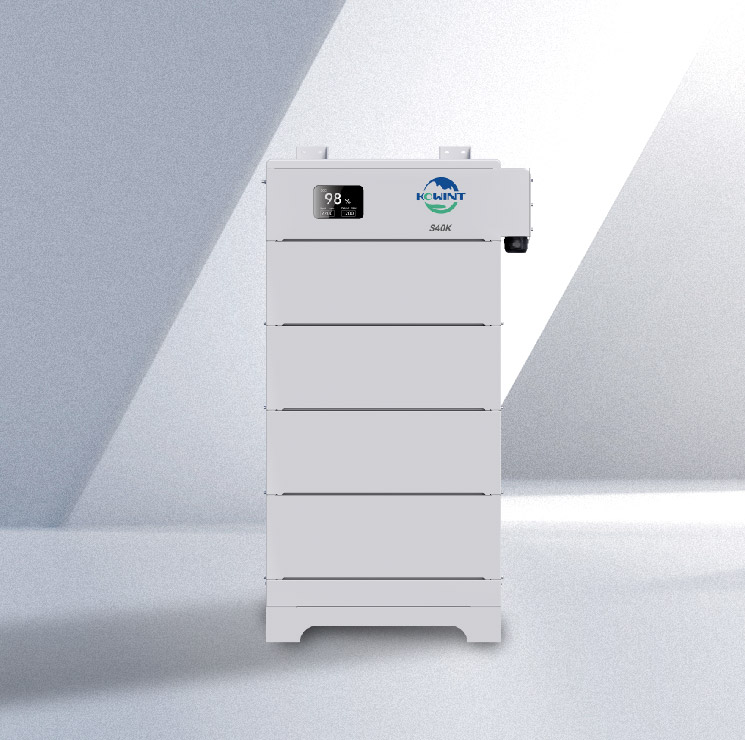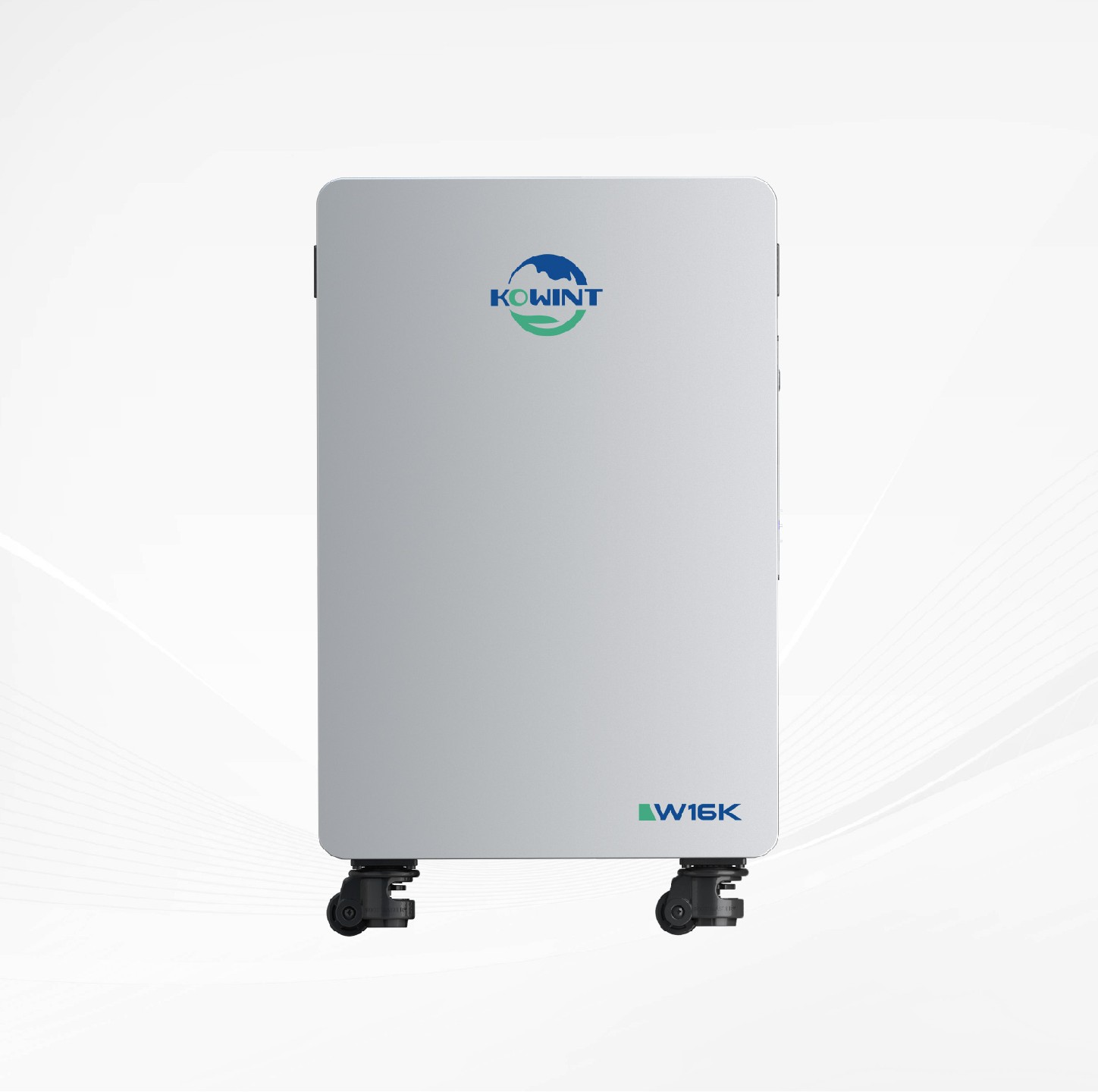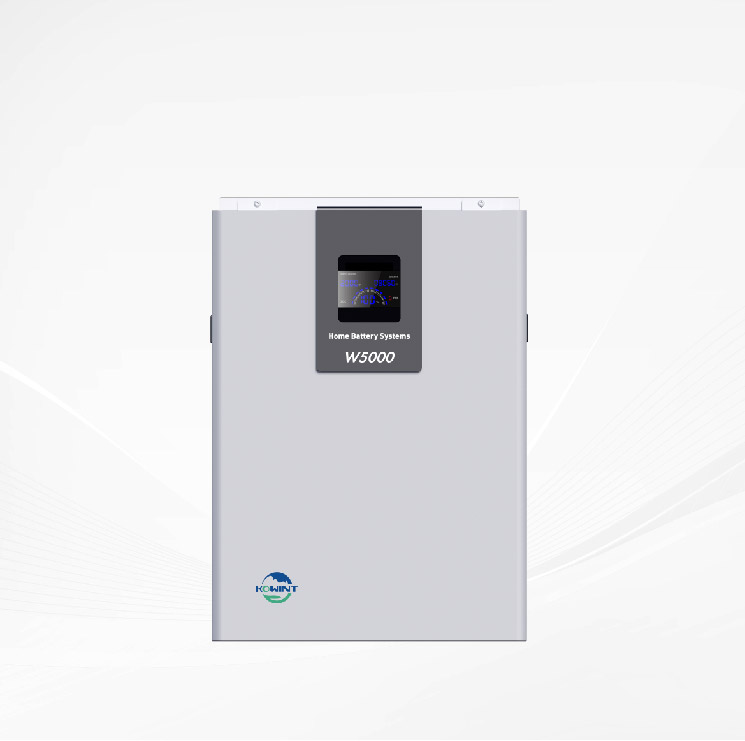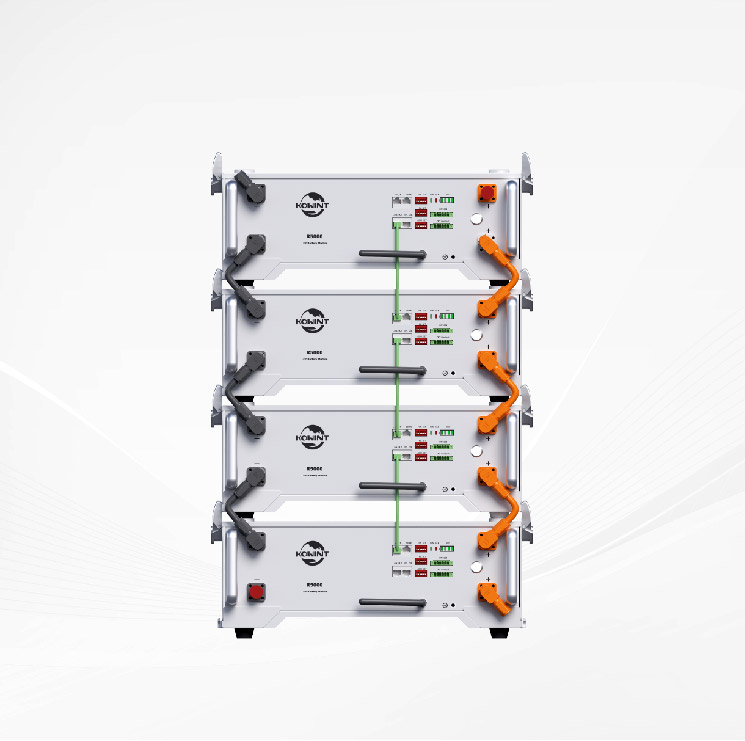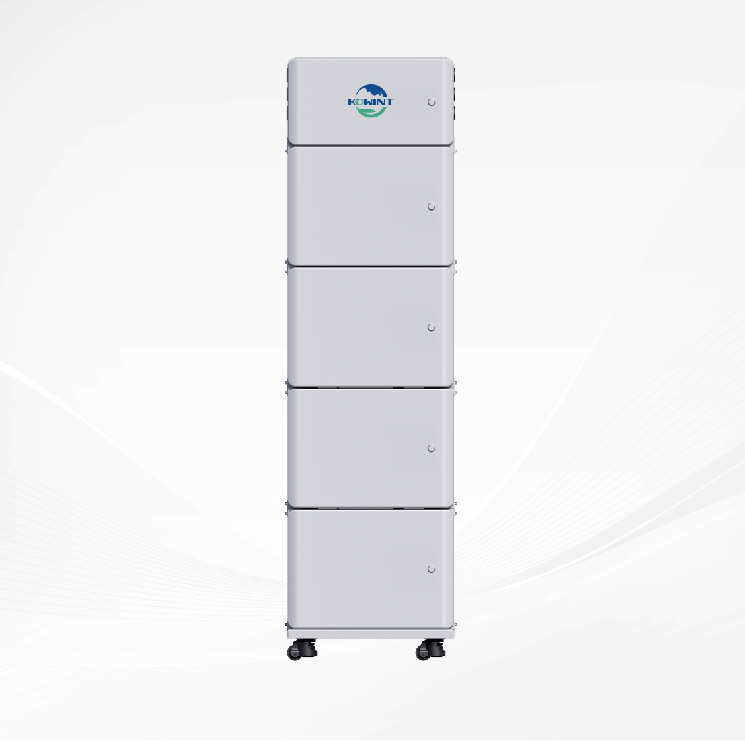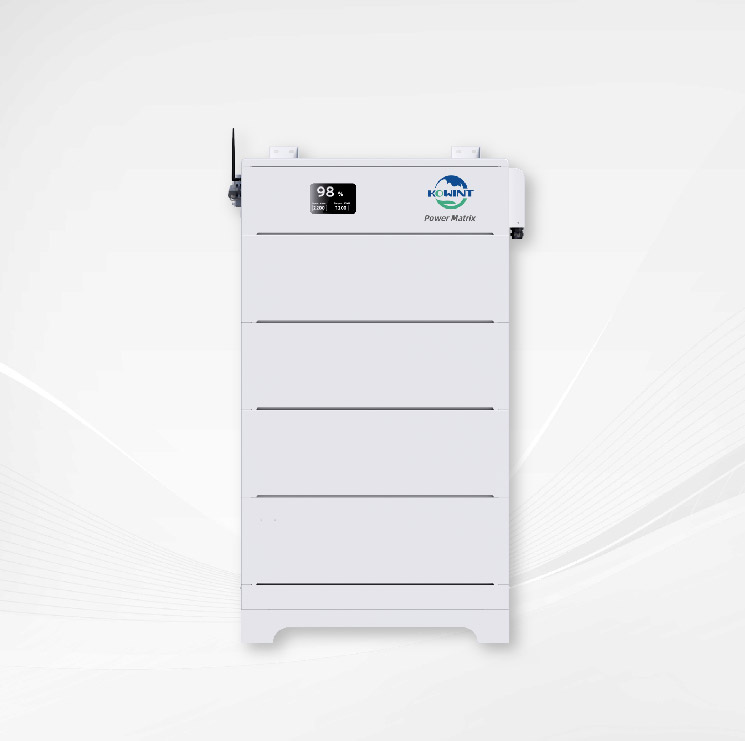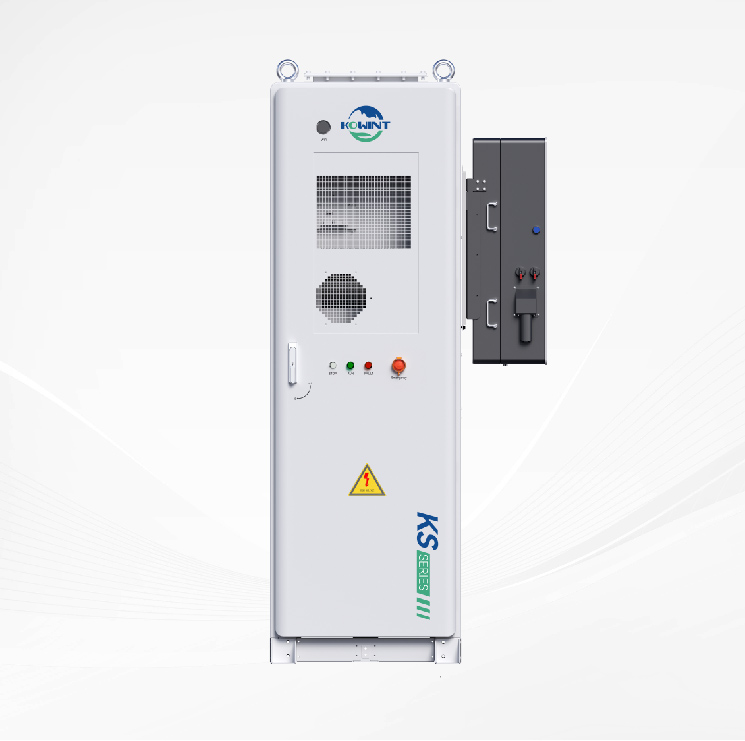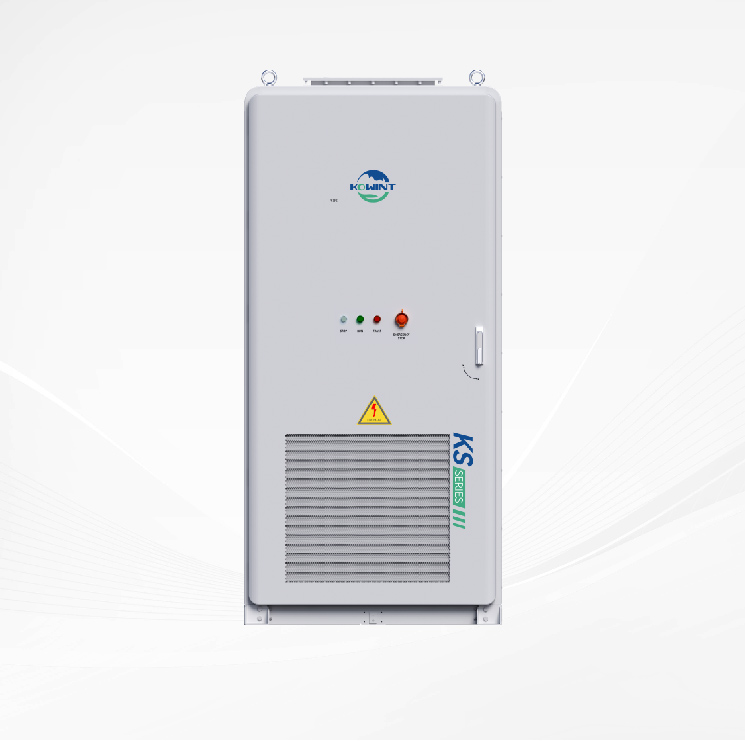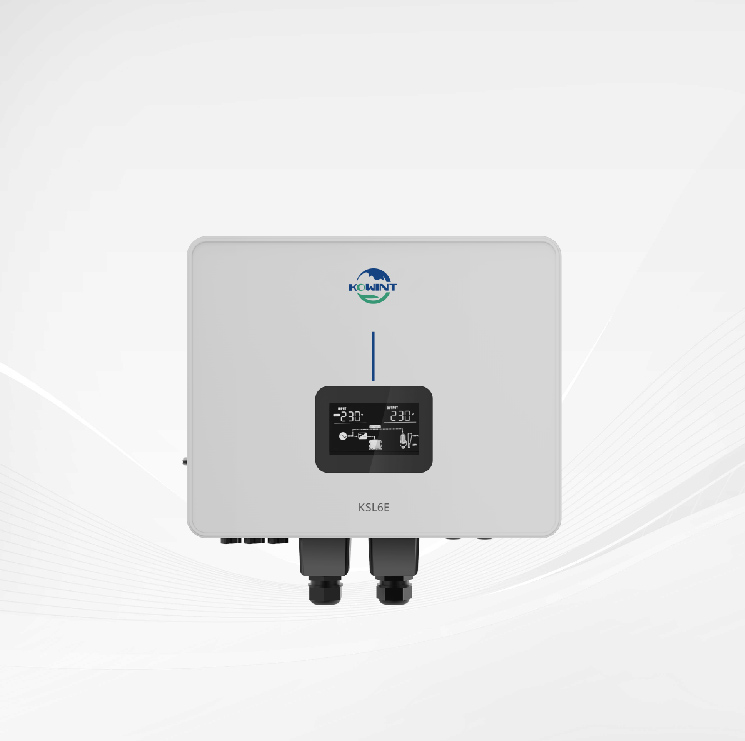Add Battery to Solar System: Enhancing Solar Power Generation and Storage Efficiency
Solar power systems that also include battery storage devices are optimal. They make it possible to put the extra power from solar panels to use at night or in the middle of the night.
It's natural to ask if you can include a battery energy storage device into your current setup.
Yes, in a nutshell, it would be conceivable. However, it's likely that some rewiring of the solar panels will be required. In addition, a new inverter may be required if the one you already have is insufficient.
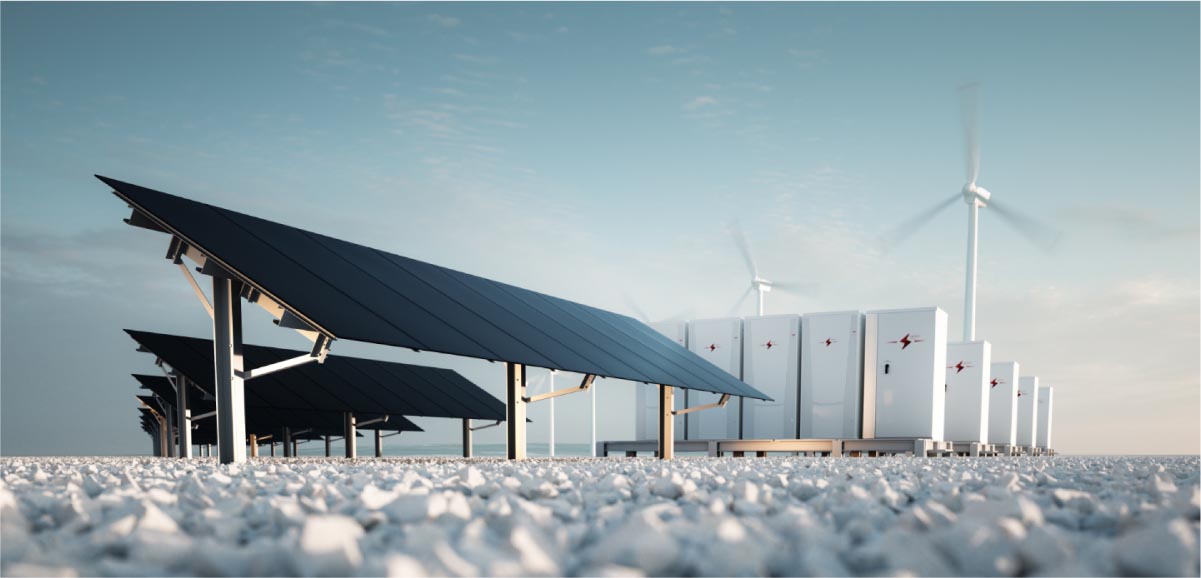
What is a hybrid solar system?
Many of the best features of grid-tied and off-grid solar power systems can be found in hybrid solar power systems. A backup battery and your connection to the utility grid are both features of your hybrid solar system.
In many respects, a hybrid system that allows you to store your own solar electricity is the optimal answer. Your solar energy can be stored in a battery or battery bank for use in case of blackout. However, unlike an off-grid system, you may still earn money by selling your extra electricity to utilities.
A hybrid solar system can nearly eliminate energy waste in a home while still qualifying for net metering and other grid-tied rebates.
How does a hybrid solar system work?
A normal solar power system that is connected to the electricity grid will only provide your home with direct power while the sun is out. You will be need to draw electricity from the grid at night and during periods of low sunshine for which you will be paid. Even after implementing daytime savings, heating costs during the lengthy winter months might be fairly substantial.
During the day, energy from the sun can be stored in a solar battery for use at night. In the evening, instead of paying for electricity from the grid, you can use the power stored in your battery. However, even if the sun doesn't shine, you can always rely on the system to provide electricity, even on the cloudiest day.
Batteries are also very helpful in dire situations. Your solar battery will activate and detach from the main panel in the event of a blackout. If you live in an area prone to blackouts, investing in a backup battery could prove useful.
Advantages of a hybrid solar system:
l Cost savings on monthly electricity bills
l Reliability in the face of power outages
l Access to solar rebates and incentives offered by individual states
l Possibility of receiving net metering rebates
Can a battery be added to my current solar system?
A battery may usually be added to an existing solar system with little effort. It is important to take precautions to ensure that the solar installer does not void the warranty on your solar system.
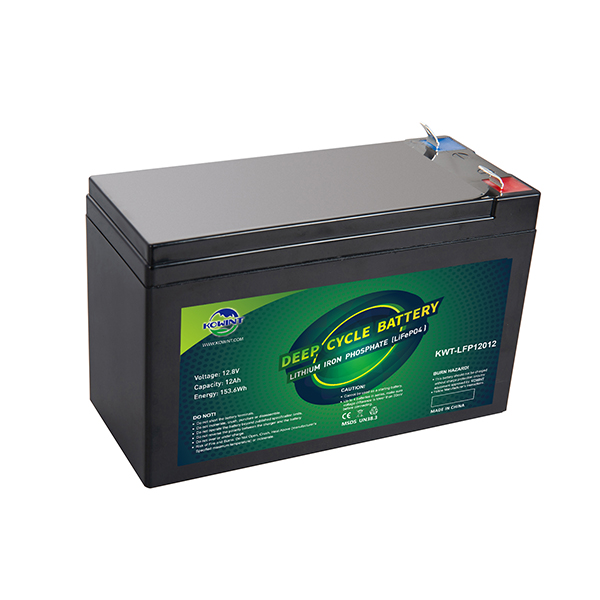
If you already have a solar PV system and want to add a battery to it, you'll need to make sure the battery is compatible with your solar inverter. An AC-coupled inverter is what you'd need here. As such, a battery can be added to the system without any prior modifications.
Why You Should Add a Battery to Your Solar Panel System?
Every solar power system will connect in some way to the existing power grid. This paves the way for homeowners to take advantage of net metering, tax credits, and other perks for those who use solar panels.
The inability to use electricity during a blackout is a major drawback of solar systems without batteries.
When the power goes off, grid-connected solar systems are required by law to shut down automatically. In the end, this means that your solar energy system will be inoperable if the power goes off.
In the event of a utility grid outage or maintenance closure, solar batteries can be used to provide power to homes and businesses.
Your solar power system can be completely self-sufficient with the help of a solar battery, which stores any energy surplus for later use.
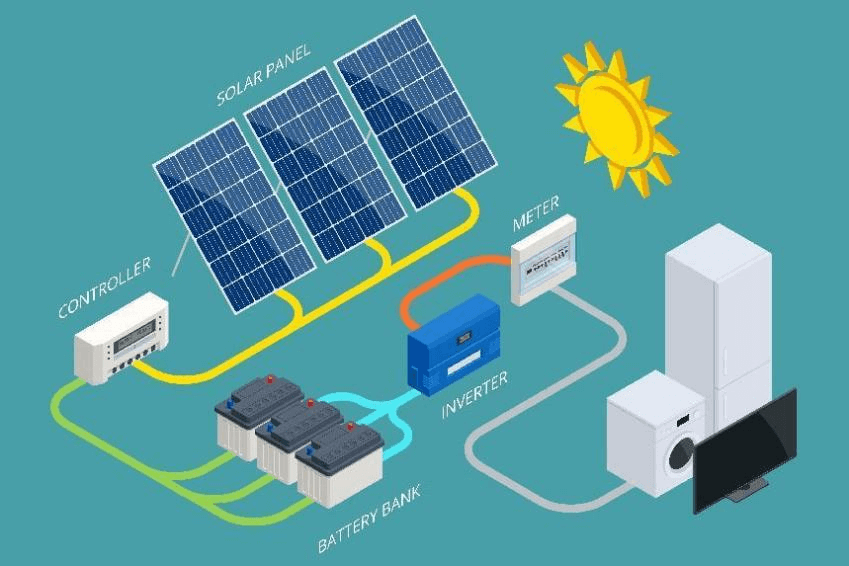
How do backup solar batteries work?
An successful home energy storage system, such as backup solar batteries, gives your home more freedom from the utility company.
What I don't understand is how they function.
When sunlight strikes your solar panels, they generate electricity. The electricity generated by the solar panels can either be utilised directly as DC power or converted to AC power.
If you have a hybrid system, your home will always be connected to the solar panels first. When the time comes, your solar panels will automatically supply electricity to your home's lights, electronics, and appliances. On a day when the sun is shining brightly, however, you may not need as much electricity, and the system's output may actually be greater than your home's needs.
When there is an abundance of energy, it can either be stored in a battery or sent back into the power grid. In a grid-connected system, any excess energy must be fed back into the grid. In many circumstances, the utility company will credit your payment for the energy you produce in excess through a process called net-metering.
However, you will have to pay for grid electricity when the sun goes down and your panels stop producing power. When there is a power outage at night, your grid-connected system will go dark along with the rest of the city. However, you may reduce your reliance on the grid and increase your energy security by installing a backup solar battery.
Any surplus energy generated by the system can be used to charge a backup battery.
Any surplus solar power is stored by backup solar batteries for use by the homeowner rather than the utility providers. A backup battery's value is most evident during a blackout or when used to lower monthly electricity costs.
What backup solar batteries are compatible with your solar panels?
Various solar systems can use a wide variety of batteries. For many hybrid setups, a lithium solar battery is the best option for a battery.
A hybrid solar system requires a high-performance battery, and lithium batteries meet those requirements. High-quality batteries capable of withstanding the frequent discharge rates required by hybrid systems are essential to their efficacy. Several days' worth of energy can be stored in a conventional off-grid solar power installation. More often than not, hybrid solar power systems require daily charging and discharging.
Because of their durability and long lifespan, lithium batteries are ideal for hybrid vehicles. Lithium batteries have various advantages over lead-acid ones, including being smaller, lighter, and requiring less upkeep. They also don't give off any hydrogen gas. However, compared to other battery types, lithium batteries tend to be more expensive.
When should you add battery to solar system
Whether or whether you should invest in battery storage for your home's existing solar system depends on your current demands and your long-term ambitions. Check out the following:
Net metering and time-of-use rates
To fully realise the cost reductions that net metering can provide, you may need additional equipment, such as a solar battery. If you want to know if your utility company supports net metering, you can talk to a Solar Energy Specialist about it.
Using time-of-use (TOU) rates is another perk of installing a solar battery alongside an existing solar energy system. The cost of your electricity could change under TOU tariffs based on the time of day or even the season. Even though different providers have varied prices, evening hours may result in greater utility bills.
When electricity prices are high, a solar battery can be used to power a home without drawing power from the grid.
Power outage protection
Blackout defence is another useful application for a backup battery. Whether it's due to the more widespread power outages across the country or a malfunctioning power grid that's struggling to keep up with demand, you may need a backup plan for when the electricity goes out in your home. Having a system in place to store energy that can be used to power essential appliances is a terrific idea.
When you know your options, adding a battery backup to an existing solar panel system is a simple process. Read on to learn the key distinctions between the available options.
What To Consider Before Adding Batteries
There are a number of things to think about before settling on a strategy for a battery upgrade project.
What Type Of Inverter Does The Solar System Currently Use?
Either replace the inverter or put in an AC-coupled solar battery if the solar system wasn't built with battery storage in mind. Some battery types already incorporate a storage inverter, making them compatible with both microinverters and regular string inverters.
Some households, however, have already prepared for the possibility of adding a battery by installing a solar power system equipped with a hybrid inverter. They can use a DC-coupled battery with their device in these unusual instances.
The remaining lifespan of the current inverter should also be taken into account. Many string inverters, for instance, only last for about ten to fifteen years. If the machinery is older than 10 years, a DC-coupled solution may be preferable over simply replacing the inverter.
Is The System AC- Or DC-Coupled?
Two independent inverters are used in an AC-coupled battery system. The energy produced by the solar panels is converted to alternating current (AC) via a single inverter. This energy can be used to power the home, with any surplus being sent back to the power company. The second inverter is compatible with the battery, which supplies DC energy.
An alternative is a DC-coupled system, which utilises a hybrid inverter to convert DC power from the solar panels and the battery to AC power. With this setup, the batteries can be charged straight from the solar panels' DC current. It can also convert DC power to AC power when feeding energy from the battery to the house or the power grid.
The initial investment would be less if an AC-coupled battery were used in conjunction with the already-existing inverter, but the system's efficiency might suffer as a result. This may prove significant over time. Because the consumer won't have to spend money replacing the inverter, it's a more cost-effective solution.
However, if they are more concerned with system efficiency, a DC-coupled system is the way to go. To minimise losses, a DC-coupled system allows solar panels to charge batteries directly without going through an inefficient power conversion first.
Are There Any Permit Or Legal Requirements To Adding Storage Batteries In Their AHJ?
The installation of a battery energy storage system is likely to necessitate permits from the AHJ in your area. In addition, a revised interconnection agreement with the utility provider in question may be required. So, before beginning the job, make sure you contact your AHJ to find out their criteria and standards.
Battery Capacity Needs
Taking into account the customer's intended use of the stored energy is the first step in determining the appropriate battery storage capacity. While some homes may only require backup power in the event of an emergency, others may prefer to have it on a permanent basis.
The expense of a whole-house backup system can quickly add up, especially if the homeowner uses power-hungry appliances like an air conditioner, electric heater, or hot tub. Because of this, most people who use off-grid systems either don't have very many large loads, or they use them very infrequently.
Find out how often they'll need to run their home's loads to get an idea of what big battery storage system they'll need. While a refrigerator, furnace's electrical components, lights, Wi-Fi router, and a few electronics can run on a smaller battery system, larger items can soon drain the power supply.
Customer Expectations
Customers' expectations of how much power the batteries will provide during a blackout must be evaluated. It may be impossible to use electric appliances such as water heaters, dryers, heat pumps, air conditioners, power tools, and stoves without a bank of batteries. A critical load panel is typically installed by solar contractors to prioritise the most vital loads.
Financial Savings From the Battery
Your customer can save even more money by installing a battery and using its power when rates are the lowest, according to time-of-use (TOU) tariffs and net metering. The cost of electricity is typically highest in the late afternoon and early evening and lowest in the middle of the night in regions that use time-of-use pricing. Electricity costs could also rise during the warmer months.
Some home customers may be subject to both time-of-use and demand charges. Your customers can save money on their monthly electricity bills by using their solar batteries in conjunction with demand chargers and time-of-use rates.
Federal Tax Credit for Energy Storage
Installing a home battery storage system with a capacity of 3 kWh or more now qualifies homeowners for a tax credit under the US Inflation Reduction Act. Batteries can now be installed independently of a solar power system and still be eligible for the 30% tax credit. And the installation window is 2022-2032 for qualifying systems. Your customers should consult a tax expert to determine if they qualify for the tax credit.
How to add a battery to an existing solar system
A backup battery can be added to a grid-connected solar power system in a few different ways. The technique you end up using is typically dependent on how you initially put things up. To perform a conversion, you may need to buy more parts for some systems than for others.
How difficult is it to add a backup battery to solar system
Whether or not your solar panel system was built with energy storage in mind will determine how challenging it is to install a battery.
A "storage ready" system is one that already has an inverter installed, making it simple to connect a battery to the solar power system. A battery may be easily installed here, and you won't need much besides a screwdriver for the job.
Adding storage to a solar power system after it has been installed can be a bit of a hassle if the system wasn't built with that possibility in mind from the start. You can either use an AC-coupled solution or switch to an inverter.
Solar buffer battery
Adding a battery to a grid-connected system is as easy as placing it in between the grid-interactive solar inverter and the panels. The solar battery is charged during the day using this "solar buffer battery method." The battery will provide the solar inverter with DC during the day, and vice versa at night. The inverter connects to the main breaker panel in your house. The solar battery is invisible to the inverter in this design.
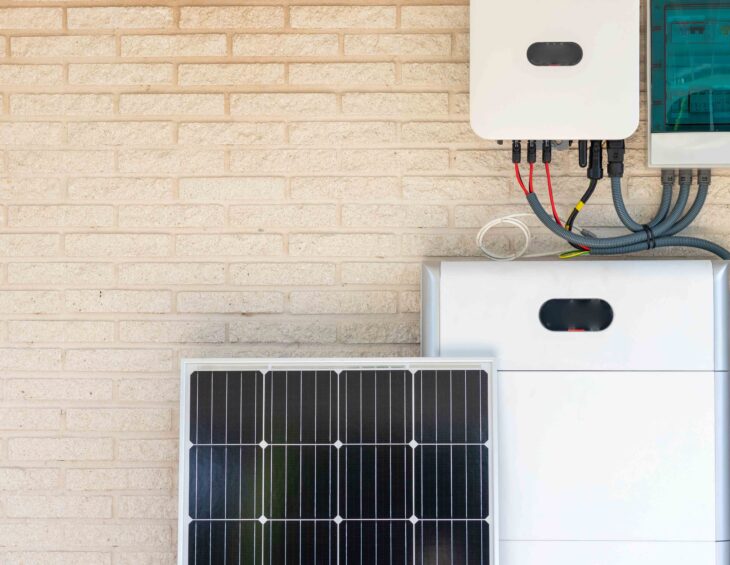
A sensor at the switchboard is required for this solar installation to function as a solar buffer. The battery should deplete if and when the home begins drawing power from the utility grid. However, the battery will begin to charge if the home begins to export energy.
AC-coupled solution
If the solar array already contains grid-tied inverters, they can be combined with off-grid inverters and a new bank of batteries to create an alternating current (AC) solution.
This is how it functions:
To begin, sunlight is converted into direct current (DC) using solar panels.
The grid-connected inverter's duty is to change the DC power into the AC power that can be used in the house or sent back to the power grid. Sadly, some energy is lost in the process of this conversion.
Finally, the hybrid inverter or off-grid inverter transforms the DC electricity from the backup battery into AC power.
The AC solution is well-liked since it works with a wide variety of inverters. It's typically the least expensive and most versatile in terms of setting. However, due to power loss during conversion, the AC approach has been shown to be less efficient than the DC solution.
Pros of AC Coupling
If you have a microinverter system, this is the simplest approach to upgrade your infrastructure. Between your grid-tied inverter and your load panels, the Radian will sit and be connected to your battery bank. It is not necessary to get rid of the current grid-tied inverter.
Cons of AC Coupling
The task of sizing the addition is complicated by the stringent criteria for inverter and battery size. If the inverter or the battery bank aren't large enough, the system will have poor performance or won't work at all. In addition, an AC coupled system might become quite pricey if the present grid-tied inverter is on the hefty side.
Compatible With
The vast majority of currently available grid-tied inverters (anything certified to UL 1741 SA)
DC-coupled solution/Inverter replacement
DC-coupled solutions are an alternative. The DC power generated by the solar panels is fed into a solar charge controller before being fed into the battery. That's how easy and effective it is. There is no need to transform the DC power to AC until it is used in your home or returned to the grid.
Because of the solution's single energy conversion and negligible power loss during transmission, it has been deemed more efficient. You would need to install off-grid inverters in place of grid-tied ones to implement this option. Since installing an off-grid inverter might be more challenging than installing a grid-tied inverter, the former will often cost more.
Pros of DC Coupling
DC coupling is compatible with more off-grid inverters and larger capacities of battery bank than AC coupling.
Cons of DC Coupling
Because the transfer switch is manual, you must be there to begin charging the PV system. Even if you forget or aren't around to flick the button on the controller, the battery bank will continue to provide backup power.
Compatible With:
Most household string inverters max input voltage 600 Volt
Replace Existing Grid-Tie Inverter With a Storage-Ready Inverter
Removing and replacing your current grid-tie inverter with a storage-ready inverter is the most expensive alternative.
This method will be the most adaptable choice because it can be used with any current grid-tie system. A select few inverters on the market are made to work with energy storage for grid-connected systems.
Pros of Replacing Your Inverter
l Compatible with any system
l Inverters designed for use with batteries have addtional features
Cons of Replacing Your Inverter
l Most expensive option, especially for microinverters
Compatible With:
l All systems
Storage ready solar systems
Even though they've gotten much more affordable, solar batteries are still one of the most pricey solar components. You can always add batteries later on if cost is an issue now. New solar panel systems can be made more resilient by opting for ones that are compatible with battery storage. These solar panel kits are versatile enough to allow you to add a backup battery at a later date if you so want. You should inquire about the battery integration process when collecting estimates from installers.
What Is the Lifespan of a Battery?
Unless the charging efficiency drops below 70%, most solar batteries can last for decades before needing to be replaced.
About every 10 years, batteries reach their end of life. At this point, you should start thinking about getting new batteries and an inverter.
How much does the installation labor cost for adding a battery?
The installation of a battery for use with a solar power system is straightforward. Instead of being a roofing project like solar panels, installing a battery might be thought of as more of an electrical project.
Your solar panel system probably required the assistance of a roof crew when it was installed. Batteries, on the other hand, are placed on the ground, typically in a basement or garage. Since fewer workers will be required to complete the installation and fewer steps will need to be taken, the total cost of the installation should be less than the cost of the panels themselves.
The labour cost to install a battery shouldn't exceed $1,000 (of course, this depends on the hourly rate of an electrician in your area) if your existing solar panel system is in good working order and no major changes need to be made. The installation will take longer and cost more money if you also need to replace the inverter.
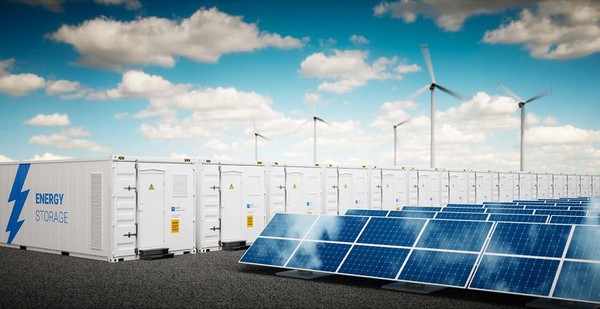
Who should you contact if your installer doesn’t install storage?
While energy storage is becoming increasingly prevalent, it is still not quite as widespread as solar. Most solar panel companies also provide battery installation services. If your installation doesn't provide energy storage and you're looking for a solution, you have a few possibilities:
Ask your installer for recommendation.
Your installer probably has fielded questions concerning storage from other customers before. You should start there if you're looking for recommendations for local storage facilities.
Look for suggestions from friends, family, or neighbors.
One of the most common ways homeowners locate an installer for a solar panel system is through personal recommendations. If you know anyone else who has solar panels installed (or, much better, a battery), you can ask them for advice. There is always another installer who will provide energy storage if yours doesn't!
Find an installer through battery manufacturers’ networks
You may typically discover an installer by contacting the manufacturer of the solar battery you're interested in. When it comes to residential storage systems, most battery manufacturers have their own team of certified installers.
Conclusion
Choosing whether or not to add batteries to your existing solar energy system might be challenging. But if you want to get the most out of your solar system, it's something to think about. Consider incorporating battery storage into your setup to reap even more rewards from renewable energy sources.


 Residential Energy Storage System
Residential Energy Storage System Commercial & Industrial BESS
Commercial & Industrial BESS Residential inverter
Residential inverter